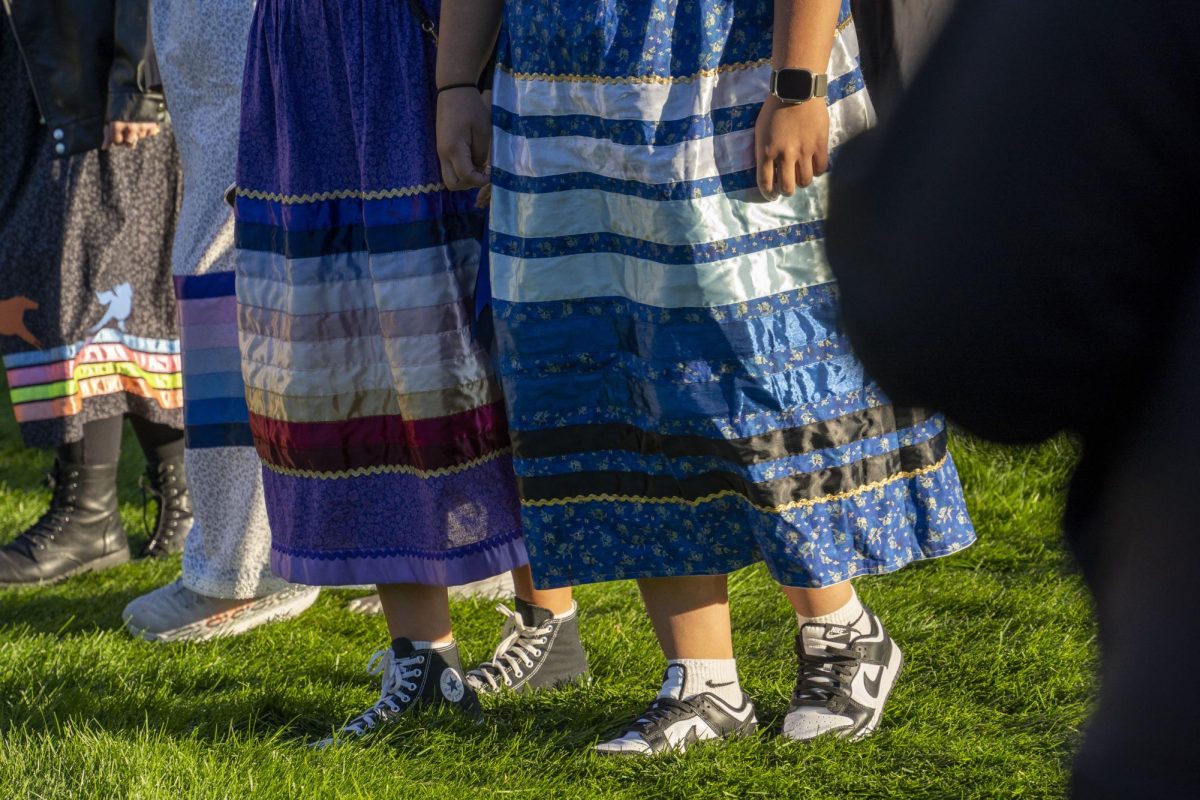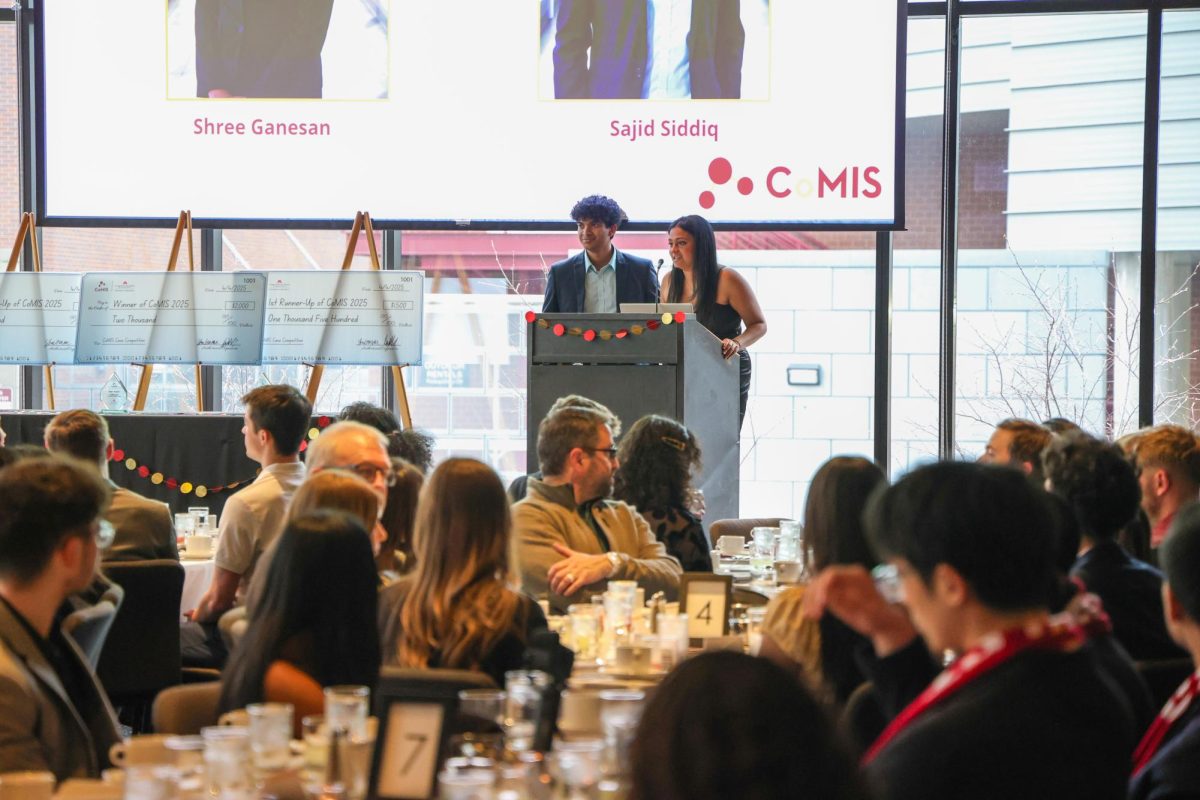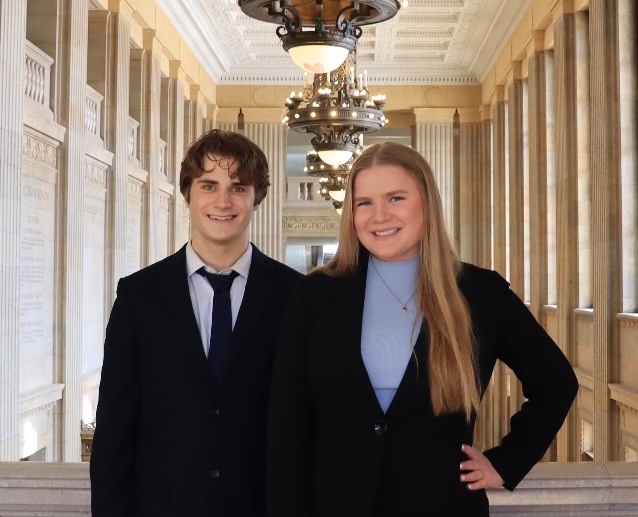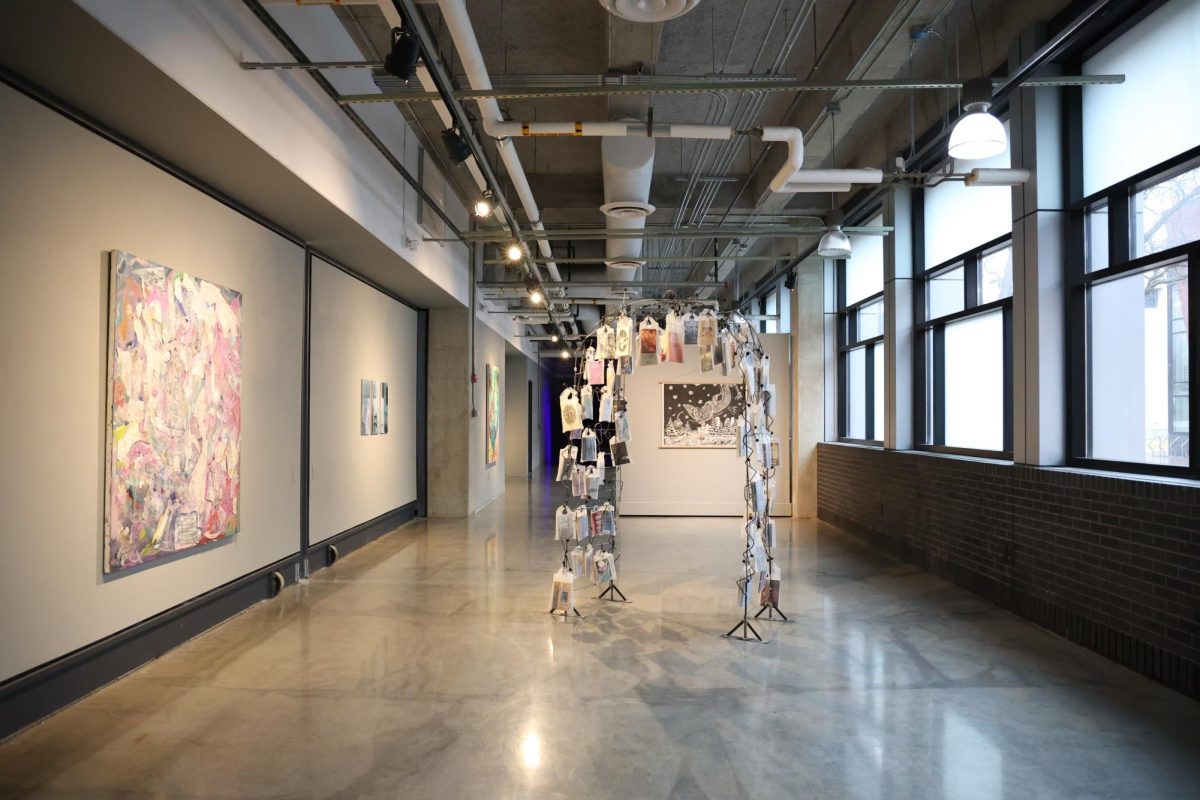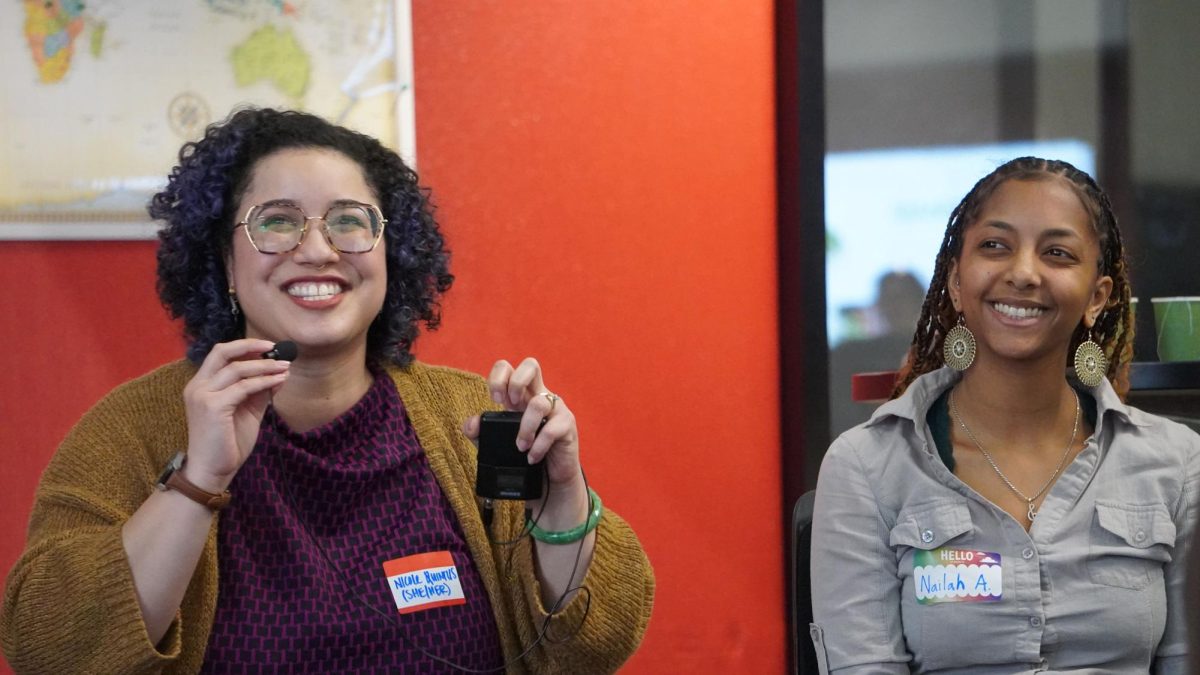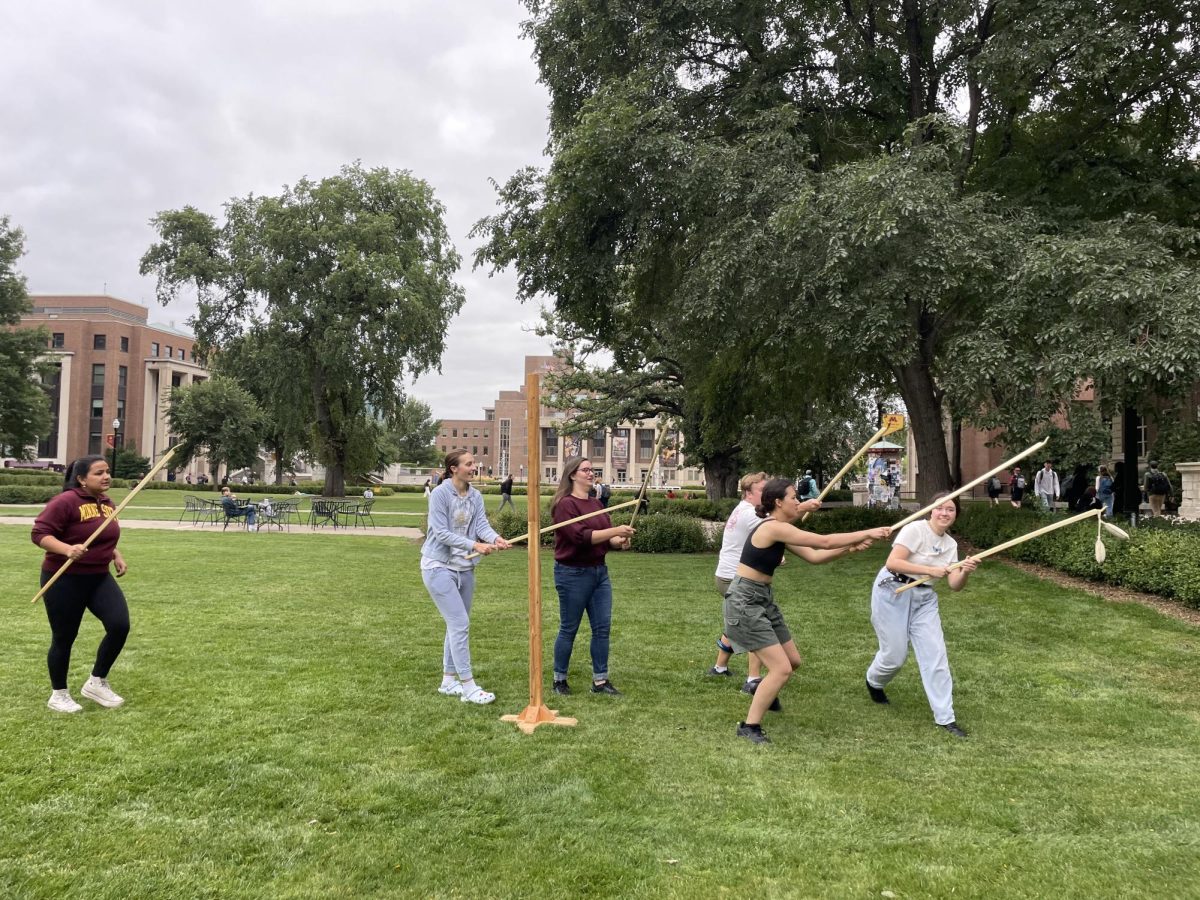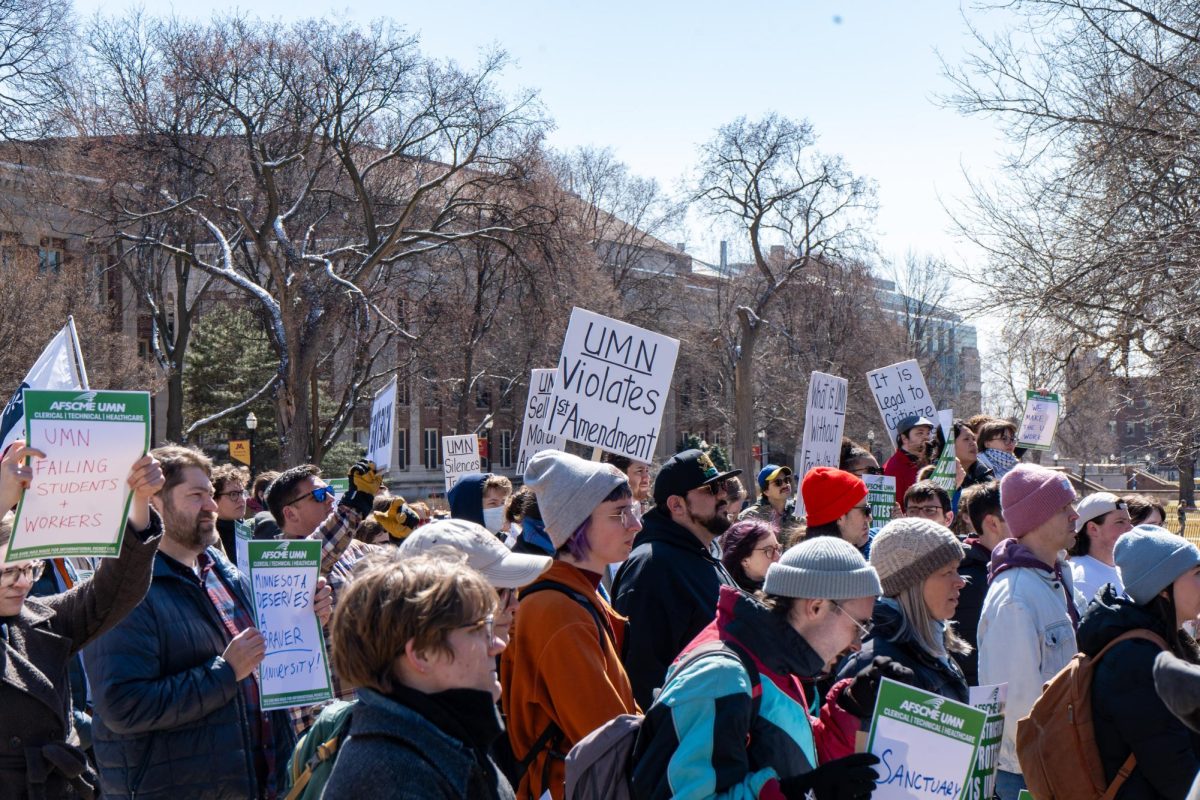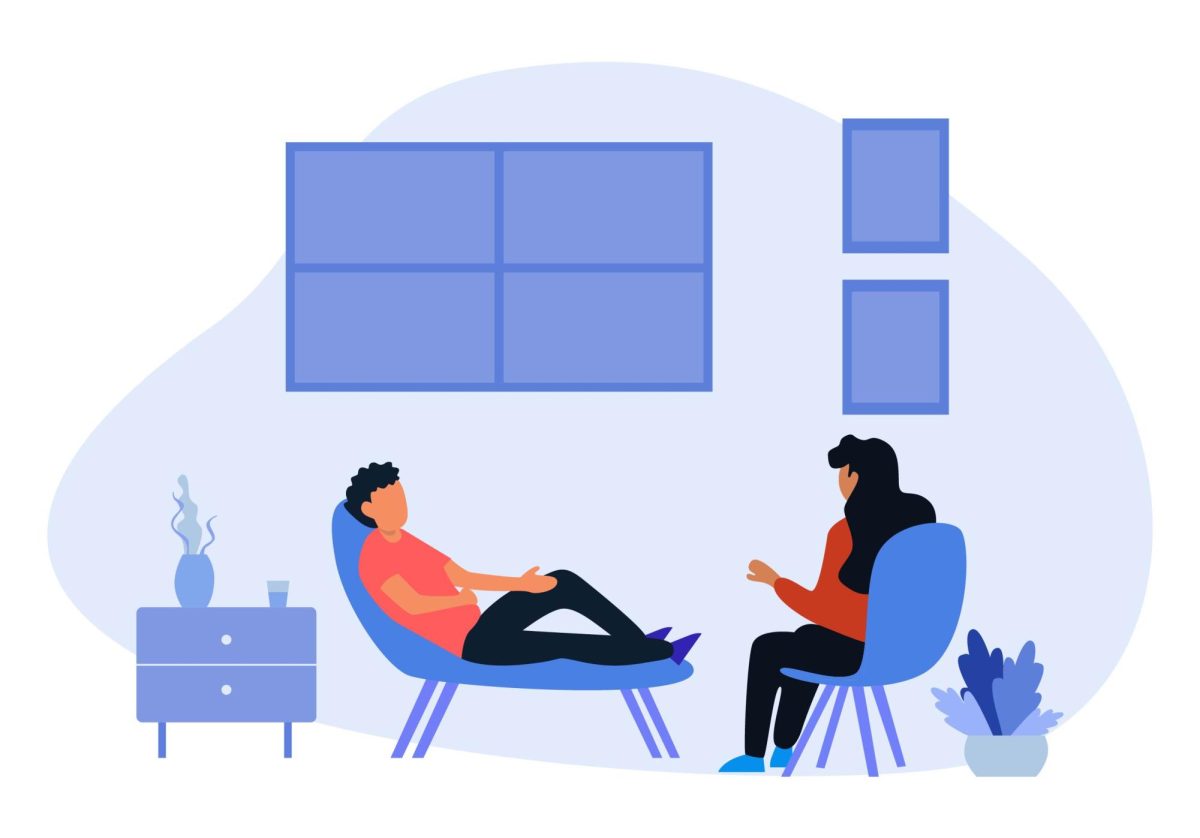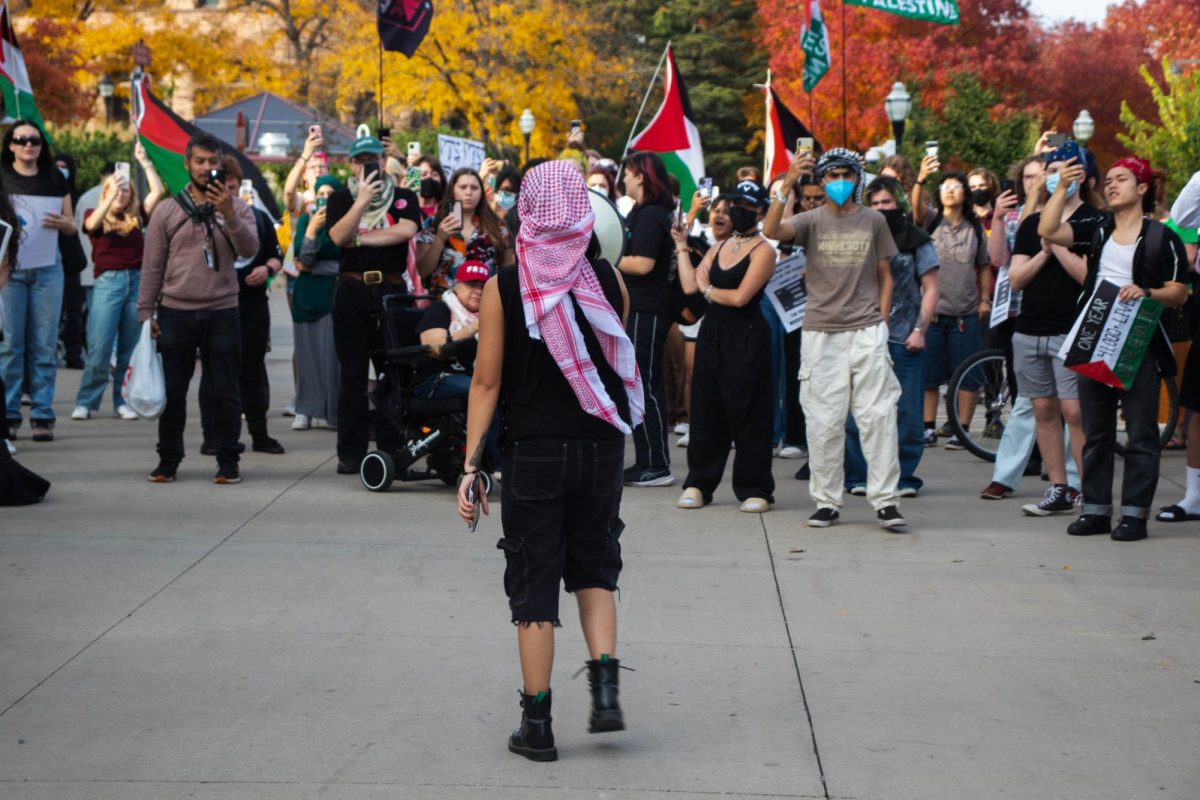Indigenous students at the University of Minnesota celebrated the state’s first officially recognized Indigenous Peoples’ Day Oct. 9.
The American Indian Student Cultural Center (AISCC) hosted day-long celebratory events at the Coffman Memorial Union, which culminated in a round dance, a community dance that includes singing, at Northrop Mall.
Araia Breedlove, the AISCC events coordinator, said although the center’s outreach work is continuous, Indigenous Peoples’ Day provides them a unique opportunity to get the broader University student population involved.
“Our center was open all day,” Breedlove said. “You could come in to do homework or study, but we also had snacks and we had crafts that you can do, like sewing and beading.”
Breedlove added that the holiday gives AISCC an opportunity to show the greater University student population how Indigenous culture can be celebrated.
“I think that’s a huge thing that we try to do is educate students on the land that they’re on,” said Breedlove. “For Indigenous Peoples Day, we really tried to open it up to the public, saying, ‘This is what we do. This is how we would celebrate Indigenous Peoples’ Day.’”
Given the University’s inaction, the advocacy of the University’s Indigenous student population is integral to the appropriate celebration and recognition of Indigenous Peoples’ Day, according to Breedlove.
“I think it’s really important that we celebrate it, otherwise no one else will,” Breedlove said. “When you have a giant school that refuses to acknowledge, ‘Yeah, Native people were here and you stole it,’ I think students are the only reason why people know about Indigenous Peoples’ Day. I think we’re the center of awareness.”
The Diversity, Inclusion, Justice, and Equity Collective, a University collective that operates within the Office of Equity and Diversity (OED), worked through social media to share event information across the Twin Cities campus.
Malinda Lindquist, OED associate vice president for institutional engagement and education justice, said the holiday gives the University an important opportunity to grow in its appreciation of Indigenous culture. Lindquist added that Indigenous Peoples’ Day offers a new and significant moment to recognize Indigenous people and to recognize their history, struggles and perspectives.
“Each opportunity that we have to engage in that type of recognition, to uplift that culture, to get a stronger sense of the historical breadth of that culture as well as the contemporary meaning for various Indigenous peoples is important,” Lindquist said.
According to Lindquist, the University’s celebration of Indigenous Peoples’ Day should be treated as a starting point for further discussion and awareness and added that similar holidays give communities moments to affirm themselves.
“It’s another opportunity just to invite people into the conversations that we really need to be having all of the time,” Lindquist said.
Minneapolis is a unique backdrop for Indigenous Peoples’ Day celebrations in its status as an epicenter of Indigenous history and culture, according to Lindquist.
Through its Indigenous Peoples’ Day celebrations and general outreach, AISCC tries to include Indigenous youth from the greater Minneapolis community. Breedlove said involving Indigenous youth from the area builds a sense of community that extends beyond the time students spend at the University.
“You have a pretty large Native community in Minneapolis, compared to the rest of the country,” Breedlove said. “So getting those connections and finding your place in the world is a lot easier when you have other Natives on your side.”
The University’s Native American and Indigenous Studies programs offer Bachelor’s, Master’s and advanced degrees around several critical issues including tribal sovereignty and tribal administration.
“We also have a distinct position in that we have an office of Native American Affairs,” said OED Director of Communications Lisa Marshall. “I know Minnesotans are not ones to toot their own horns, but our American Indian Studies Department is next-level great.”
Lindquist said although the University’s celebration of Indigenous Peoples’ Day is an important aspect of appreciation of Indigenous culture, it is only a small part of a much greater effort.
“Celebration is a key part of this work, but the other pieces that are also really key are making sure that we as an institution are always affirming and supporting our Indigenous students, staff and faculty,” Lindquist said. “The day is a really great entry point, but all of us really need to have a sustained engagement and commitment with respect to Indigenous communities and the University’s relationship with them.”


